Story highlights
NEW: Yemeni journalist says Said Kouachi briefly roomed with AbdulMutallab in Yemen
Woman suspect is purportedly shown in newspaper photos in a niqab with a weapon
The other three suspects, all men, had been in trouble with the law before
Those three male suspects are dead after police offensives
After a terrifying attack on a satirical magazine in Paris this week, the gunmen responsible for killing 12 people were shot down in a standoff with police northeast of the capital Friday.
At the same time, security forces stormed a kosher supermarket in Paris to end a hostage situation there.
The two scenes were linked by the fact that three of the four suspects were thought to be part of the same jihadist group, said Pascal Disant of the Alliance Police Union.
Also, the suspects in the second standoff demanded the freedom of the suspects in the first, Disant said.
That didn’t work.
The suspects in the magazine slayings were killed Friday near Dammartin-en-Goele in an operation by security forces, the mayor of Othis, Bernard Corneille, told CNN.
At almost the same time, the hostage standoff in Paris came to an end when police moved in, killing one of the suspects, with another apparently escaping. Four civilians were killed, apparently by at least one suspect, and two police officers were wounded, authorities said.
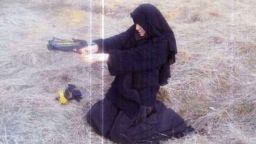
First standoff scene
The two men killed northeast of Paris were the Kouachi brothers, alleged to have been the gunmen in the deadly terrorist attack on the Paris offices of satirical magazine Charlie Hebdo.
Cherif Kouachi, 32, and Said Kouachi, 34, were French citizens known to the country’s security services, according to officials. One spent time in jail for ties to terrorism, and was in Syria as recently as this summer, according to a French source. The other went to Yemen for training, officials say.
A French source close to the French security services told CNN that investigators are looking at evidence that suggests Cherif Kouachi traveled to Syria and returned to France in August 2014.
Investigators don’t know how long he was there, according to the source, who had no information about whether Said Kouachi had also traveled to Syria, as USA Today reported.
But a U.S. official said the United States had information from the French intelligence agency indicating Said Kouachi had traveled to Yemen as late as 2011 on behalf of the al Qaeda affiliate there. A French official also told CNN Said Kouachi had been in Yemen.
Justice Minister Christiane Taubira told CNN that one of the brothers had been in Yemen in 2005, but did not say which one.
Both were in the U.S. database of known or suspected international terrorists, known as TIDE, and also had been on the no-fly list for years, a U.S. law enforcement official said.
Second standoff scene
Meanwhile, the suspects in the Paris incident were Amedy Coulibaly, 32, and Hayat Boumeddiene, 26. They were believed to have killed a policewoman in Montrouge, a southern suburb of Paris, on Thursday.
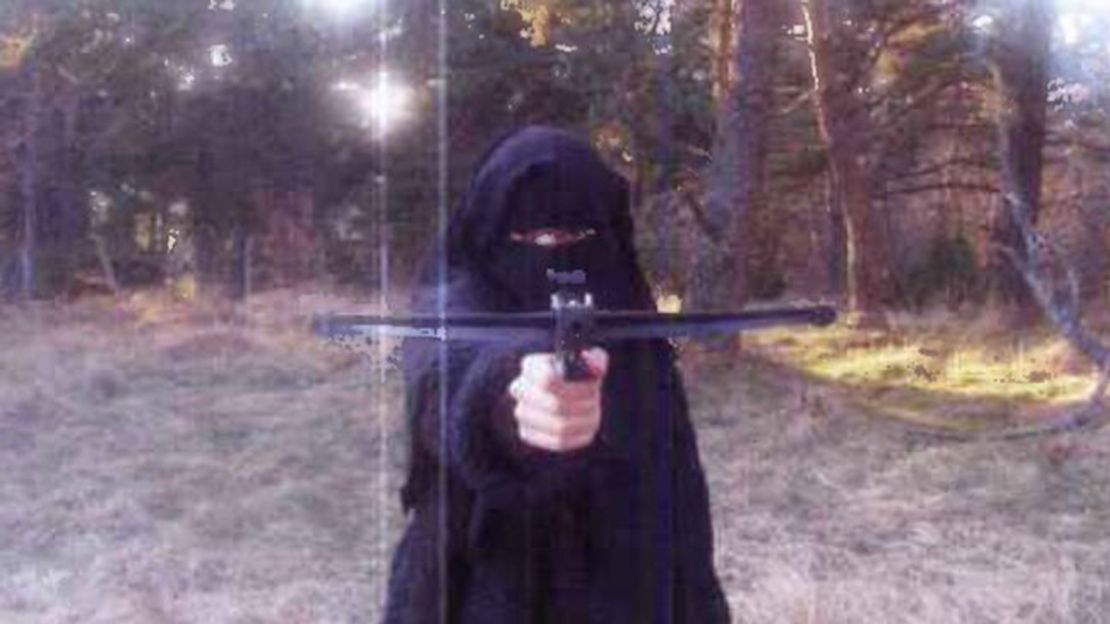
Those two suspects allegedly held several people hostage in a kosher store near Porte de Vincennes in eastern Paris, police union spokesman Romain Fabiano told CNN affiliate BFMTV.
But that incident ended when a police operation led to the death of Coulibaly, authorities said. Several hostages left the supermarket running, flanked by security service agents.
Boumeddiene apparently escaped in the confusion and was the target of massive manhunt Friday, Disant said.
Not much was immediately known about Boumeddiene. Only a little more was known about Coulibaly.
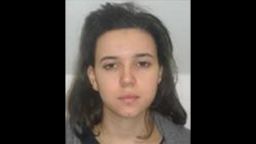
Police launched an appeal for information on these two individuals.
Coulibaly lived with Boumeddiene, a Western intelligence source told CNN.
Much more is known about the Kouachi brothers, who were the subject of an intense manhunt in France that mobilized more than 80,000 law enforcement and military personnel:
CHERIF KOUACHI
The younger of the two brothers had ties to extreme Islam for years.
In fact, before he was killed Friday, he told BFMTV that he trained in Yemen with al Qaeda in the Arabian Peninsula and that he met with Anwar al-Awlaki, the American-born Muslim who was the face of AQAP until he was killed in the fall of 2011 in a U.S. drone strike.
In 2008, Kouachi was sentenced to three years in prison for being part of a jihadist recruitment ring in Paris that sent fighters to join the conflict in Iraq.
The case began with his arrest in January 2005, at age 22, when he and another man were about to set off for Syria en route to Iraq, where war was raging.
He had a long history of jihad and anti-Semitism, according to documents obtained by CNN.
Raised in ophanages
In a 400-page court record from 2007, Kouachi was described as wanting to travel to Iraq “to go and combat the Americans.”
Kouachi stated in a deposition, “I was ready to go and die in battle,” and “I got this idea when I saw the injustices shown by television on what was going on over there. I am speaking about the torture that the Americans have inflicted on the Iraqis.”
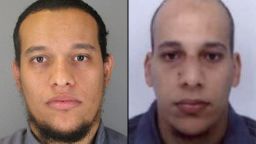
Kouachi was raised in orphanages and foster homes from a young age, and became involved in a group in Paris’ 19th arrondissement, or district, the court papers said.
Prosecutors outlined strong details of Kouachi’s interest in jihad, martyrdom and links to anti-Semitism, according to documents CNN obtained in conjunction with French newsmagazine L’Express.
Kouachi stated he came to the idea of jihad through Farid Benyettou, a well-known spiritual leader who’s been long associated in France with supporting jihad and terrorism, and is associated with a mosque in the 19th arrondissement.
Aspiring jihadist
Through Benyettou, Kouachi studied how to wield arms and use Kalashnikovs.
Kouachi stated that “the wise leaders in Islam told him and his friends that if they die as martyrs in jihad they would go to heaven” and “that martyrs would be greeted by more than 60 virgins in a big palace in heaven,” said documents in a section entitled “Motivations of Influence.”
The documents also said, “(F)or him any place on earth where there is such an injustice is justification for jihad; what was going on Iraq was in his eyes such an injustice.”
The mosque, called La Mosquee de Stalingrad, has since been demolished and appears to be a construction site.
Smoking pot
Court records show Kouachi said he didn’t consider himself a good enough Muslim, and said he had only been to the mosque two or three times before he met Benyettou, and he had been smoking cannabis.
Kouachi told investigators he committed himself to the idea of jihad during Ramadan in 2004. He told his friends he was going to Syria to fight.
The documents say when police interviewed his accomplices, they stated that Kouachi “said he was ready to firebomb and to destroy Jewish shops in Paris.”
When officials confronted Kouachi with that information, he told them “that’s not exactly what I said. … I don’t hide having proposed anti-Semitic ideas, but I would note that I never really would have done that.”
Kouachi’s lawyer, Vincent Ollivier, painted a different picture of his client in the 2005 incident.
The attorney said at the time that his client’s profile was more “pot smoker from the projects than an Islamist.”
“He smokes, drinks, doesn’t sport a beard and has a girlfriend before marriage,” Ollivier told the French newspaper Libération the month after his client’s arrest.
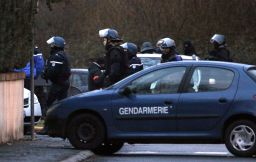
Didn’t want to chicken out
A report from the TV network France 3, which apparently first aired in 2005, described Kouachi as a young fan of rap more interested in chasing girls than going to the mosque. But he changed when he became a student of Benyettou, according to the report.
Kouachi’s cursory training for his planned mission in Iraq involved jogging in Paris’ hilly Buttes-Chaumont park and being shown the basics of operating a Kalashnikov by a man he met at the mosque, French newspaper Le Monde reported at the time.
Kouachi told the court that he was motivated by U.S. troops’ abuse of detainees at Abu Ghraib prison in Iraq. But he said he was relieved when he was arrested.
“The closer the departure got, the more I wanted to turn back,” he told the judge, according to Le Monde. “But if I chickened out, I was in danger of looking like a coward.”
The court said Kouachi had wanted to attack Jewish targets in France but was told by Benyettou that France, unlike Iraq, wasn’t “a land of jihad,” Bloomberg News reported at the time.
Prosecutors presented no evidence to the court of any plans to carry out attacks in France, according to a New York Times report.
Born in Paris to Algerian parents
Kouachi and six other people, including Benyettou, were convicted and sentenced to prison in 2008 for their roles in the recruitment ring.
Kouachi didn’t actually go to prison after the trial because half of his three-year sentence was suspended and he had already spent enough time in pretrial detention, Bloomberg reported. He was released from custody before the trial.
A former pizza delivery boy, Kouachi was working as a fishmonger in a supermarket at the time of the trial, according to French media.
He told the court that his main interest at the time was rap music, according to Bloomberg.
Years later, Kouachi found himself facing a new criminal charge.
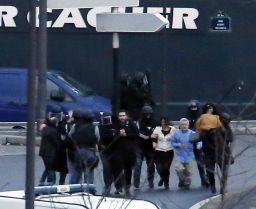
In 2010, Kouachi was charged in connection with a foiled plot to aid the escape of Smain Ait Ali Belkacem, an Algerian Islamist imprisoned for bombing a Paris commuter rail station in 1995. But public prosecutors later dropped the charges, according to Le Monde.
Kouachi was born in Paris to Algerian parents who died when he and his brother were young, Libération reported.
He was raised in a home in Rennes, a city in the northwestern French region of Brittany, according to the newspaper. He obtained a qualification in sports education before moving back to Paris, it said.
French newspaper Le Figaro talked to neighbors near the apartment in the northern Paris suburb of Gennevilliers that Kouachi reportedly shares with his wife.
People in the neighborhood described him as polite and reserved, the newspaper reported. The local baker, whose name was given only as Salah, said the younger brother was “always cheerful.”
Inside the building, a man who lived on the same floor as Kouachi and his wife described her as wearing a full veil through which only her eyes were visible. The wife “doesn’t speak to any man, ever,” the neighbor, who was only identified by his first name of Eric, told Le Figaro.
SAID KOUACHI
Less is known about the elder Kouachi brother, who doesn’t appear to have as high a profile as his younger sibling.
A French official told CNN that Said Kouachi received training in Yemen. The official did not give details about when the trip occurred or how long it lasted.
A U.S. official says the United States was given information from the French intelligence agency that Said Kouachi traveled to Yemen as late as 2011 on behalf of the al Qaeda affiliate there.
His time in Yemen is corroborated by a Yemeni journalist, who says that he saw Said there – and that Said claimed to have briefly been a roommate of Umar Farouk AbdulMutallab, the convicted would-be “underwear” bomber who tried but failed to detonate a device aboard a U.S. airliner over Detroit on Christmas Day in 2009.
Yemeni journalist and researcher Mohammed al-Kibsi told CNN that he saw Said Kouachi twice in the old city of Sanaa, Yemen, in 2011 and 2012. Al-Kibsi said was researching AbdulMutallab’s background in mid-January 2011 when he came across Kouachi unintentionally. He said Kouachi was friendly and used to walk around the old city, hence how he met al-Kibsi.
Kouachi said that he and AbdulMutallab used to pray together at Yemen’s al-Tabari School, and that they shared an apartment for one to two weeks in Yemen. Kouachi was studying Arabic grammar at the Sanaa Arabic Grammar Institute, al-Kibisi said.
Al-Kibsi said he saw Kouachi again in 2012, in the old city of Sanaa at another Arabic language center.
CNN does not have official confirmation that Said Kouachi knew AbdulMutallab, a Nigerian national who, authorities said at his U.S. trial, told the FBI that he that he had links to Yemen-based al Qaeda in the Arabian Peninsula. Last month, AQAP released a video apparently showing AbdulMutallab with the group’s leader, Nasir al-Wuhayshi.
The U.S. official who said Said Kouachi had traveled to Yemen said the man had received a variety of weapons training from al Qaeda in the Arabian Peninsula (AQAP) – the al Qaeda affiliate in Yemen.
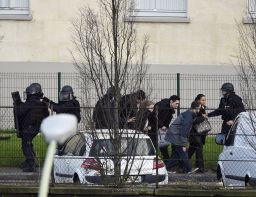
It is also possible Said Kouachi was trained in bombmaking, a common jihadist training in Yemen.
His ID card after attack
He has never been convicted of a crime and resided in Reims, in northern France, French Interior Minister Bernard Cazeneuve told reporters.
His identification card was found in the vehicle abandoned after Wednesday’s attack, Cazeneuve said.
“It was their only mistake,” Dominique Rizet, BFMTV’s police and justice consultant, said earlier.
Mohammed Benali, who runs the mosque in Gennevilliers, the suburb where Cherif Kouachi’s apartment is, said the two brothers used to come to Friday prayers there “not assiduously but regularly.”
He told Le Figaro that he knew Said Kouachi better, but that he hadn’t seen either of the brothers at the mosque in at least two years.
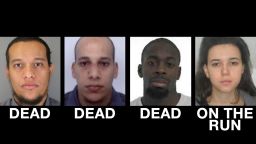
Not enough to be investigated
Benali said the older brother was “a very reserved man,” but he recalled one angry outburst in the mosque when the imam encouraged the faithful to vote in the presidential election.
Said Kouachi “had an angry reaction, he left the prayer room and voiced his disagreement,” Benali said. “For these lunatics, when we practice and teach moderate Islam – actual Islam – we’re nonbelievers.”
BFMTV reported that like his brother, Said Kouachi was born in Paris and was known to police.
The Libération report suggested that at the time of Cherif Kouachi’s arrest in 2005, the brothers were staying in Paris with a Frenchman who had converted to Islam.
Said Kouachi was taken into custody and questioned during that investigation but was later released, Le Figaro reported.
His name also came to the attention of police during the investigation of the 2010 prison break plot, but there wasn’t enough evidence to keep investigating him, Le Monde reported.
AMEDY COULIBALY
Before he was killed, Amedy Coulibaly purportedly told CNN affiliate BFMTV that he belonged to ISIS, or the Islamic State in Iraq and Syria, the terror group trying to create a fundamentalist religious state across Sunni area in those two countries.

CNN has not independently confirmed the authenticity of the French broadcaster’s recording with Coulibaly.
Coulibaly, 32, was a close associate of Cherif Kouachi, a Western intelligence source told CNN. Coulibaly went by the alias Doly Gringny, the source said.
Coulibaly and Cherif Kouachi were involved in the 2010 attempt to free an Algerian serving time for the 1995 subway bombing.
Coulibaly was arrested May 18, 2010, with 240 rounds of ammunition for a Kalishnikov, the source said.
He had a photo of himself with Djamel Beghal, a French Algerian once known as al Qaeda’s premiere European recruiter, who was convicted of conspiring to attack the U.S. Embassy in Paris.
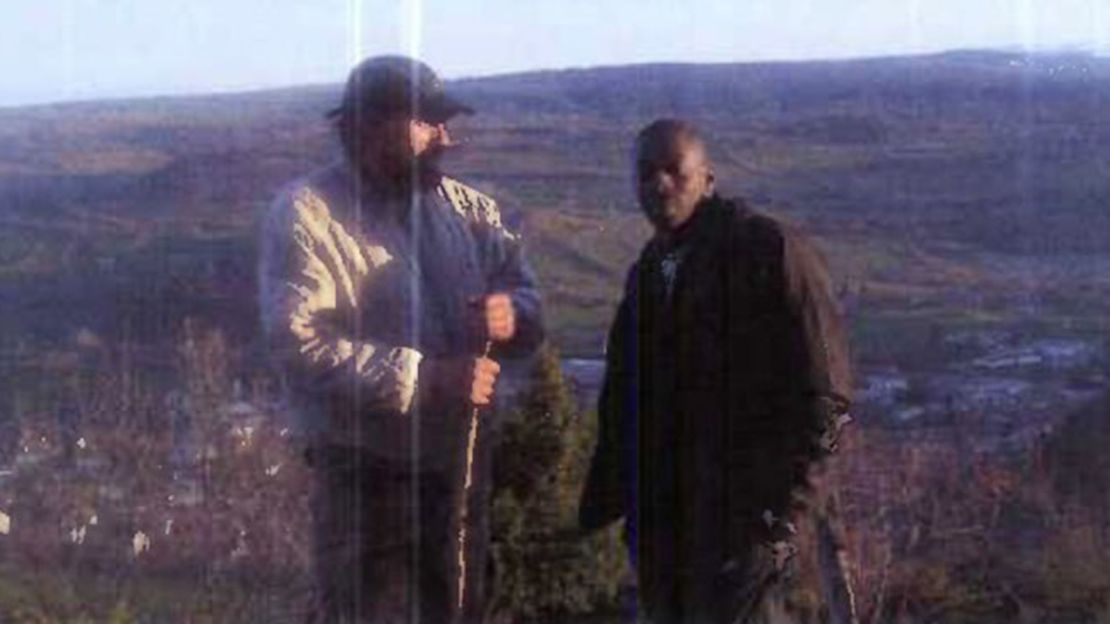
Coulibaly was indicted May 22, 2010, in connection with the prison break plot.
Cherif Kouachi was under investigation for the same plot, but there was not enough evidence to indict him, the source said.
Cherif Kouachi visited Coulibaly during a pre-trial detention. The prison break plot was known as the BELKACEM Project, the source said.
Coulibaly shared a residence with Boumeddiene, and they traveled to Malaysia together, the source said.
Hayat Boumeddiene
The French newspaper Le Monde posted photos purporting to show Boumeddiene, 26, wearing a niqab in 2010 and holding a weapon that appears to be a crossbow in a rural setting. A niqab is a head-to-toe black covering, except for the eyes.
CNN has not independently confirmed the authenticity of the stills.
In one of the photos, a woman Le Monde identifies as Boumeddiene is shown in a niqab is posing near cheek-to-cheek with Coulibaly in what the newspaper called a selfie.
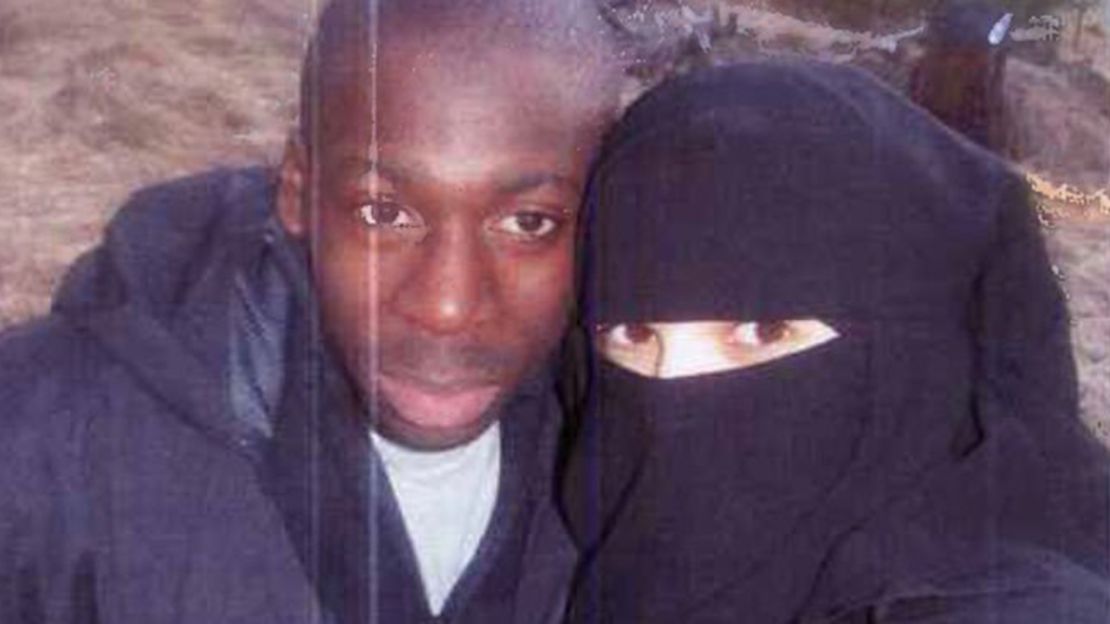
Coulibaly holds a pistol in a firing pose in one photo.
In another, the woman is kneeling and readies to fire the crossbow-like weapon. In that photo, her black niqab allows her face and hands to be exposed, but her face can only been seen in profile.
Another photo shows her pointing the weapon at the camera, but her face is obscured by the niqab, with only her eyes exposed.
CNN’s Barbara Starr, Nick Paton Walsh, Evan Perez, Lonzo Cook and Deborah Feyerick and journalist Hakim Almasmari contributed to this report.





